VET APPROVED

The information is current and up-to-date in accordance with the latest veterinarian research.
Learn more »If you head to the pet store to adopt a hamster, you’ll likely see an enclosure packed with these little rodents. This might make you think that keeping these animals together is a perfectly safe choice. After all, the pet store does it, so it must be safe, right?
In truth, hamsters are rather solitary creatures. While a few rare types of hamsters can cohabitate, most of the time, keeping several together will spell disaster. Hamsters prefer to live by themselves and can even become violent when forced to share a space with others.
Some dwarf hamsters are fine being kept in pairs, and if you play your cards right, you can even keep a group of hamsters together, which is called a horde. But you have to do this with the right hamsters; otherwise, you’ll be setting yourself and your pets up for failure.
Is It Safe to Keep Hamsters Together?
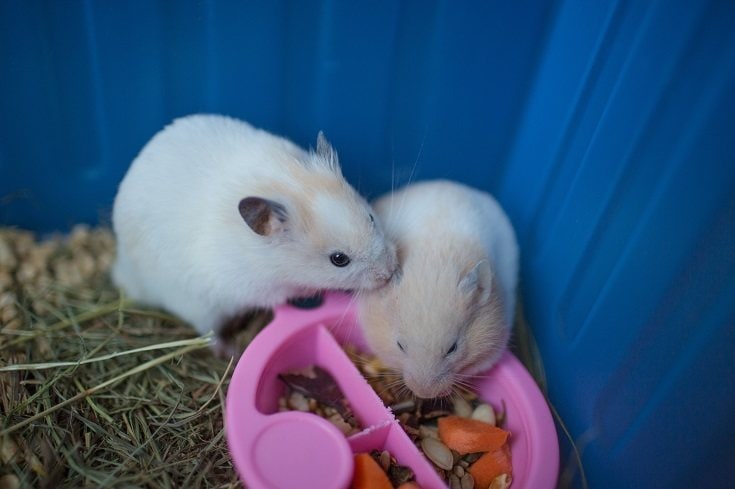
In general, the answer is no. It’s not safe to keep hamsters together. In the wild, most hamsters live alone and only seek out others when it’s time to mate. For pet hamsters, this instinct remains intact. If you break this rule, depending on the type of hamsters you’re dealing with, the consequences could be severe. Many hamsters will fight each other and can cause injury, illness, stress, anxiety, and in extreme cases, even death.
To make sure you don’t put two of the wrong hamsters together, let’s take a closer look at a few popular species of hamsters kpet as pets and discuss the likelihood of them cohabitating peacefully.
Can Syrian Hamsters Live Together?
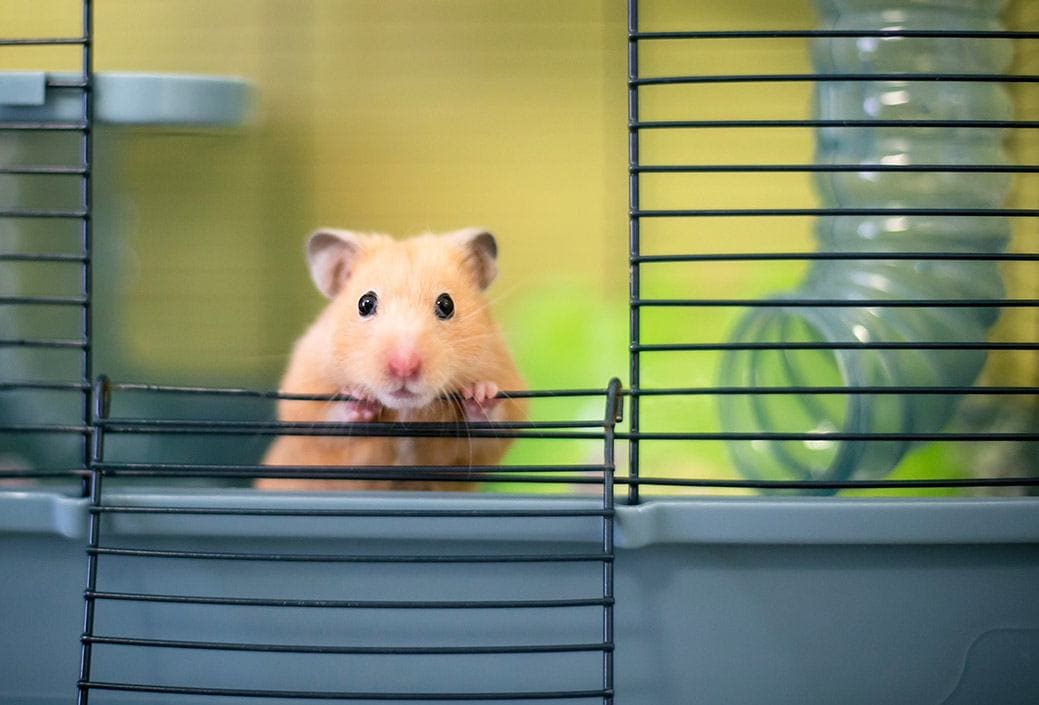
Syrian hamsters are some of the largest and most docile of all hamsters that are commonly kept as pets. They’re generally about 5–7 inches long when fully grown and can weigh as much as 6 ounces (around 160 grams).
While these hamsters are considered to be friendly with humans, they’re not social with other hamsters. They only meet up to mate, and in the wild, you’ll never find two living in the same burrow. They’re territorial, and if you put two Syrian hamsters together, you’re almost guaranteed to see fighting between them.
So, never keep Syrian hamsters together. Females in particular are much larger than and more territorial than their male counterparts; however, males are also not compatible with other males.
Can Robo Hamsters Live Together?
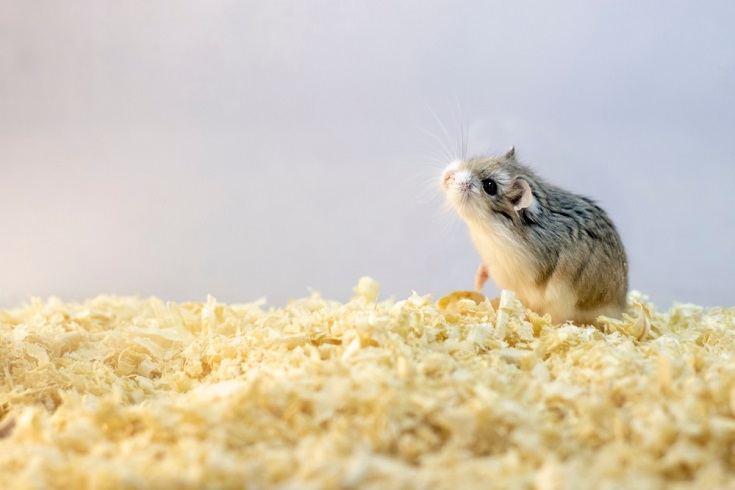
The Roborovski hamster, more commonly known as the Robo, is one of the few hamster species that have been observed in nature living in pairs. They’re usually found alone, though, even in the wild, so this is the exception and not the rule. That said, the Robo hamster is one of the most likely species to get along in cohabitation. If you want to keep more than one hamster in a single enclosure, Robos are a good choice. However, early desensitization to each other is key.
Can Winter White Hamsters Live Together?

Pure white hamsters of this species are incredibly rare, and you’re unlikely to find them without some serious searching. Their white coats only come in during the actual winter. During the rest of the seasons (which is what your house’s environment lends itself to), they tend to have a brown-colored coat.
That said, hybrids of winter whites are rather common, and these hamsters sometimes live in groups in the wild. They can be found in hordes much larger than just two, and there have even been cases of winter white hamsters sharing burrows with other animals! Granted, in a small enclosure, creating ample space for two hamsters can be difficult, but if you can provide enough room for them, two or more winter white hamsters should be able to cohabitate without much issue.
Can Dwarf Hamsters Live Together?
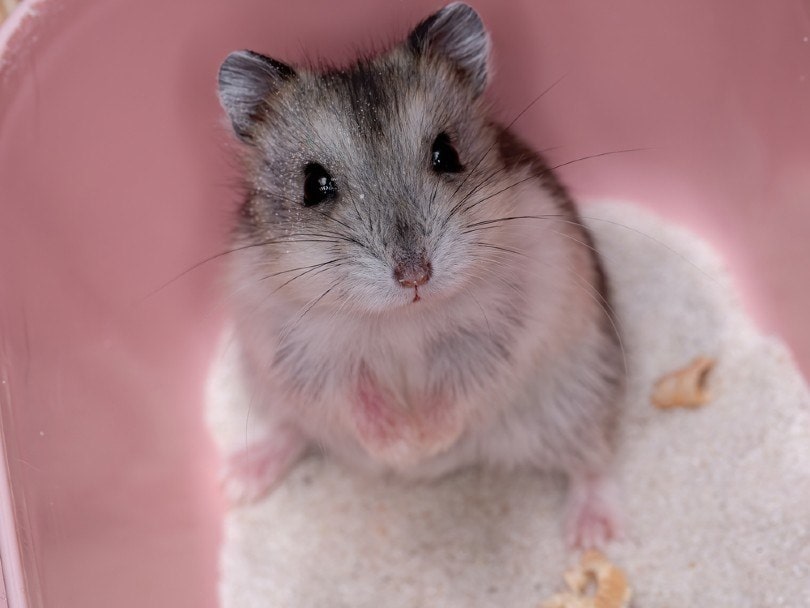
There are many types of dwarf hamsters, including winter whites and Campbell’s Russian dwarf hamsters. Even though most full-size hamster species can’t be kept together for their safety, many dwarf hamster species can cohabitate with success. These include the Campbell’s Russian dwarf hamster, which you’ll often find hybridized with winter whites. Similarly, these hamsters can also be kept in pairs or even small groups.
That doesn’t mean that all dwarf hamsters are good candidates for cohabitation, though. Chinese hamsters are also dwarves, but these are solitary hamsters, unlike winter whites and Campbell’s Russian dwarf hamsters. Chinese hamsters will fight if kept together, even if you’re just keeping one male and female together. They will need to be kept in separate enclosures and only put together for mating purposes.
Rules for Setting Up Successful Hamster Cohabitation
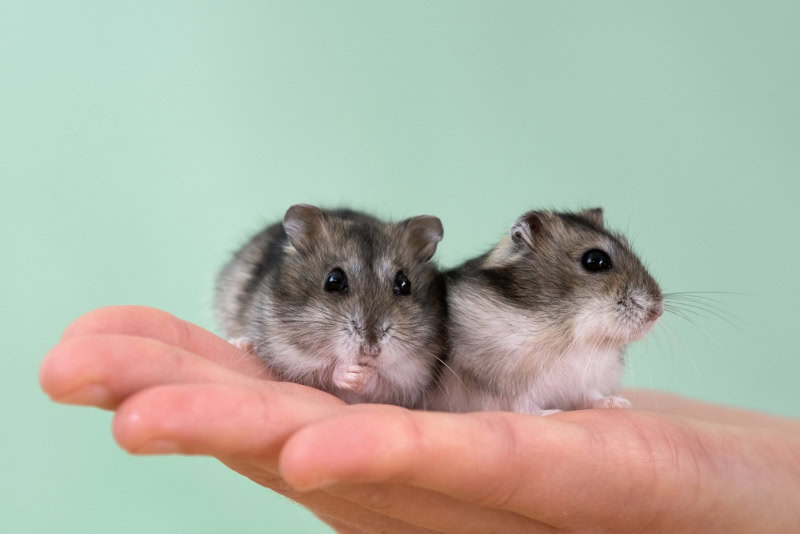
Even if you pick a hamster species that can do well with multiple animals in the same enclosure, there are extra steps you’ll have to take to set them up safely. You can’t simply throw two hamsters in a small cage and expect things to work out. Instead, you’ll need to follow these guidelines to ensure that your hamsters have everything they need to cohabitate in peace without fighting.
1. Start Them Together Young
If you attempt to introduce two adult hamsters, they’ll almost always fight. Hamsters become territorial, so you’ll be best off introducing two young hamsters together in a shared enclosure. They’ll learn to adapt to each other as they age, preventing a lot of the territorial and dominant behaviors you’d see when introducing two adults.
2. Do Same-Sex Pairings
For mating purposes, you’ll need to keep a male and female together. However, females can become extremely territorial and aggressive after giving birth. They might even eat their own young! When this happens, other adults in the same enclosure are also at risk. But if you keep two hamsters of the same sex together, be it two females or two males, you’re far less likely to see fighting between them.
3. Do Same-Species Pairings
It might seem like two dwarf species are close in size and similar enough to keep together, but this is rarely a good idea, as their temperaments can differ greatly. Not all dwarf species agree with cohabitation, even if some individuals do. As a general rule, only keep hamsters of the same species together—if at all.

4. Prepare Backup Enclosures
Even if everything seems like it’s going smoothly, things can change. Your hamsters might get along just fine one day but be at each other’s throats the next day. If this happens, you’ll need to have a backup enclosure prepared where you can move one of the hamsters to keep them both safe.
5. Provide Ample Resources and Space
If resources are scarce, it could cause fighting among your hamsters, even if they usually get along well. You’ll need to make sure there’s plenty of space in the enclosure; two hamsters need a lot more space than one. Also, ensure there’s enough food and water to go around without the need to fight over resources.
Conclusion
Don’t let the hamster enclosure at the pet shop trick you. They might keep all of those hamsters in the same cage, but that doesn’t mean it’s a good idea for you to do the same. Most hamsters are solitary creatures and will become territorial, aggressive, and violent when introduced to others. Still, there are a few species that can be safely housed together, provided that you take some sensible precautions, such as providing ample space and resources and only keeping together hamsters of the same sex and species.
- Next on your reading list: Hamster vs Hedgehog
Featured Image Credit: Natalia Kopylcova, Shutterstock
Contents
- Is It Safe to Keep Hamsters Together?
- Can Syrian Hamsters Live Together?
- Can Robo Hamsters Live Together?
- Can Winter White Hamsters Live Together?
- Can Dwarf Hamsters Live Together?
- Rules for Setting Up Successful Hamster Cohabitation
- 1. Start Them Together Young
- 2. Do Same-Sex Pairings
- 3. Do Same-Species Pairings
- 4. Prepare Backup Enclosures
- 5. Provide Ample Resources and Space
- Conclusion
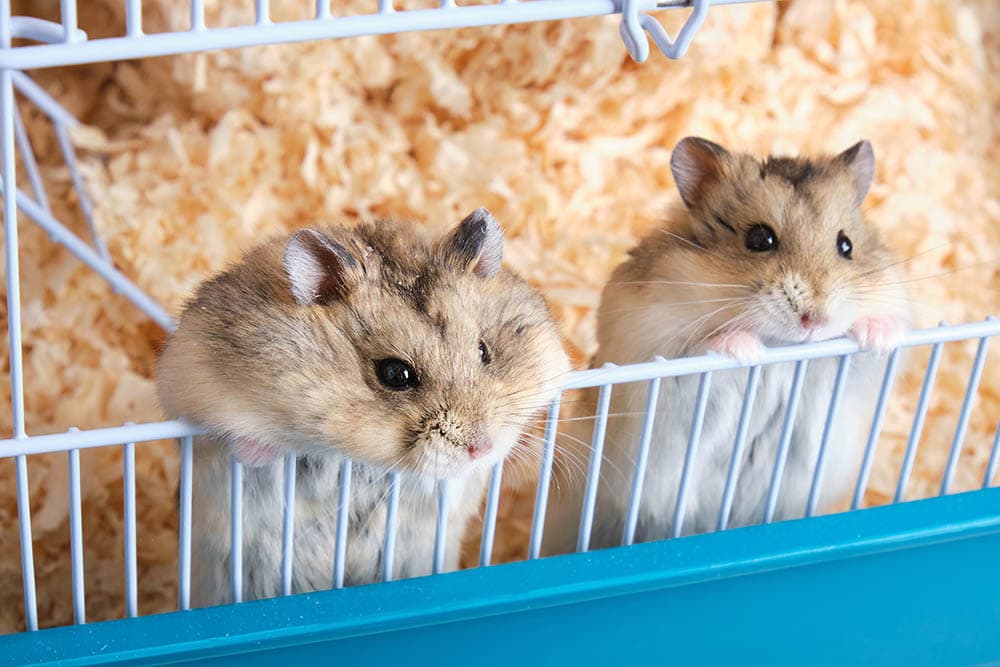






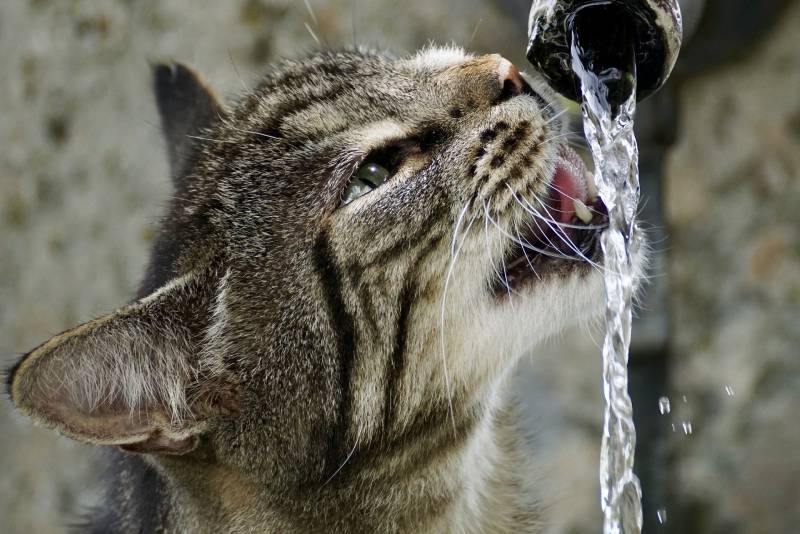
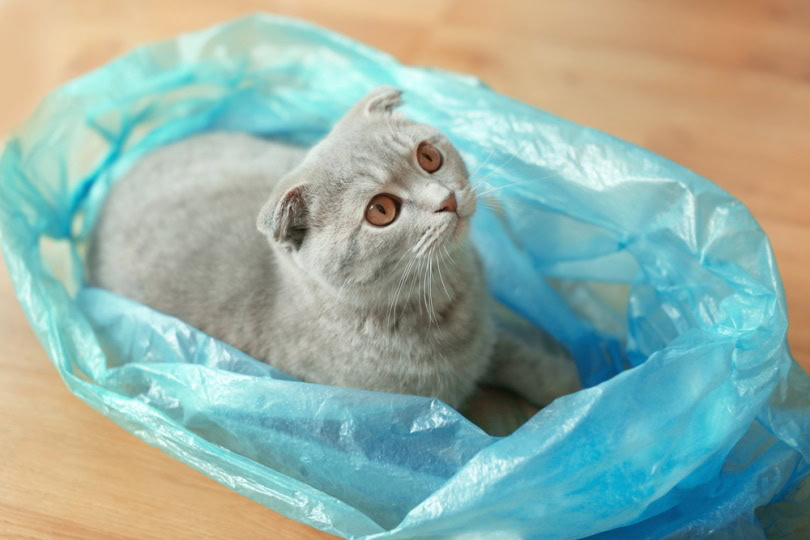
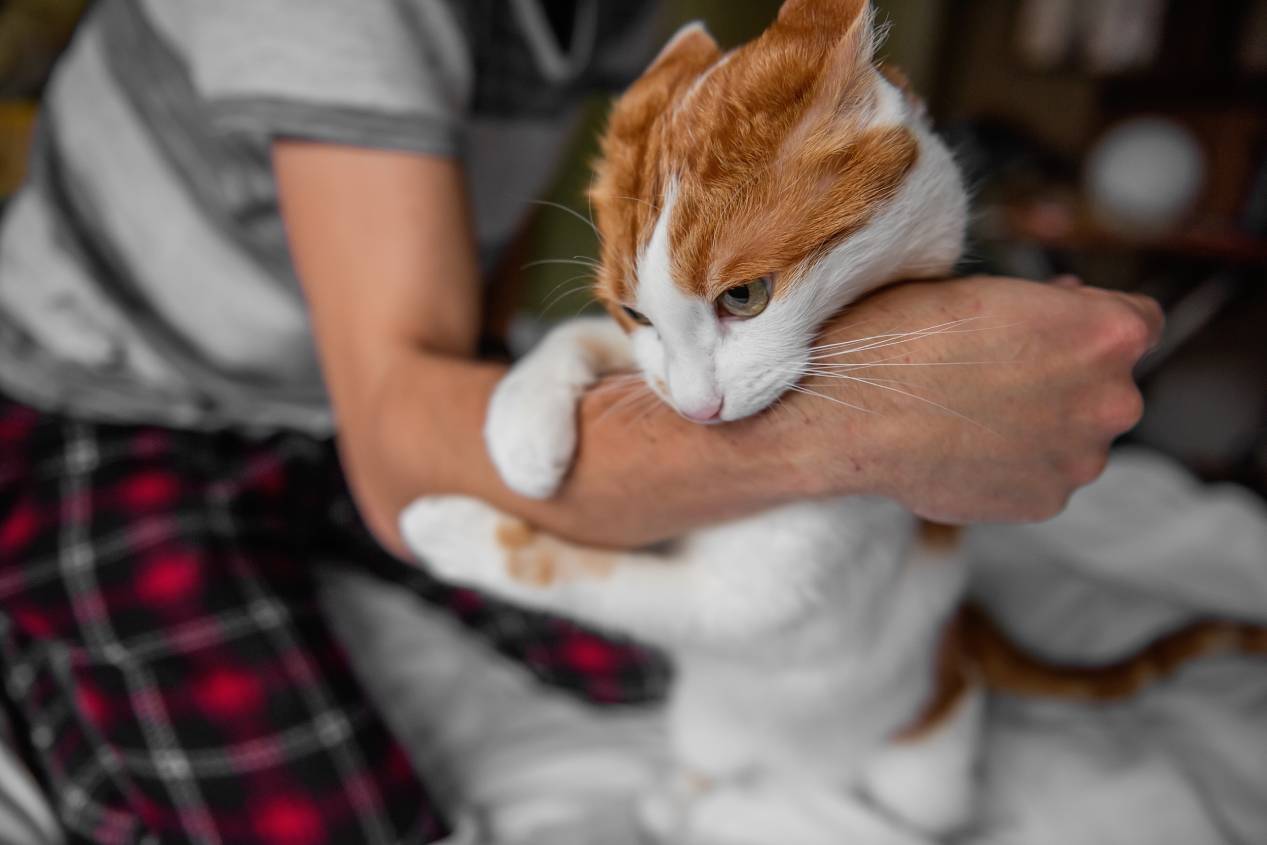


2 Responses
I noticed you said nothing about fancy hamsters.
Hi Preslee, Fancy Hamsters are another name for Syrian Hamsters which we mention shouldn’t be kept together as they may end up fighting!